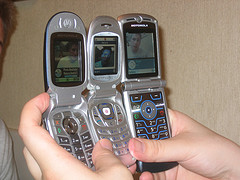“Teens do not use email” & more

In July, 2012, the Pew Research Center published a report titled “Teens 2012: “Truth, Trends, and Myths About Teen Online Behavior.” The Pew Center is a nonpartisan “fact tank” based in Washington, D.C. whose mission is to provide high quality, objective data to leaders and policymakers. Data for this report was collected from adults and teenagers across the country by cell phones and land lines.
We present below some of the findings from the study. Go to the full report from Pew for more.
- Teens and people up to age 29 have the highest rates of Internet use over the past eight years
- Teens have the highest rate of cell phone ownership of any age group
- The most common device used to access the Internet is a cell phone
- Texting is by far most teens’ preferred method of communication
- Volume of texts among teens has risen from 50 per day in 2009 to 60 each day in 2012
- Teens limit their use of email – 6% report using it daily while 39% report never using it
- Teen girls send more text messages per day than teen boys
- Teens love to use geolocation services on their cell phones
- A small percentage of teens use video chat, Skype, or live video streaming
- older teens (ages 14 to 17) are more likely to consider negative consequences of posts than younger (ages 12 to 13) users
- Teens get most of their advice about how to behave online from peers
- Parents are the biggest influence on online and cell phone behavior
Texting has become so popular that some reports indicate that teens are texting while asleep at night, waking up and not remembering that they did. Sleep-texting is an issue that must be studied and viewed as a disturbing phenomenon among our youth. (from WebMD Magazine, May 2012).
In May, 2012, the city of Ft. Lee, New Jersey banned texting while crossing the street. Violators may receive an $85.00 ticket.



